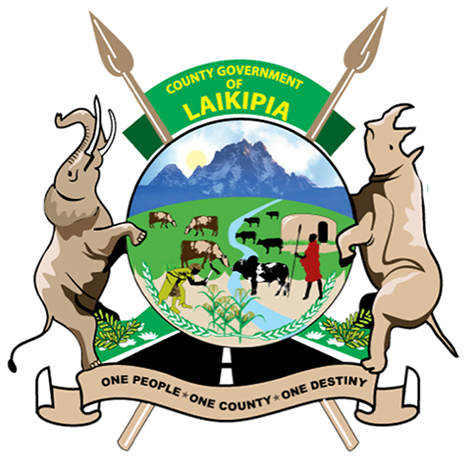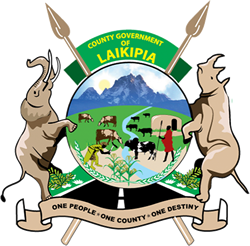NTRH Business Plan Targets Improved Customer Experience
Nanyuki Teaching and Referral Hospital has embarked on the implementation of its business plan, as it readies to take up its role at the apex of County's new UHC referral system. The move ushers in a period of heavy investments aimed at broadening the range of services and scaling up existing ones to improve client experience.
The six-year business plan, which has both short and long-term goals, seeks to make NTRH a regional center of excellence in affordable medical services provided for its diverse client base.
The move will see the hospital focus more on secondary health care providers to support referrals from cluster facilities.
Hospital CEO Dr. Timothy Panga says the development, which is part of a wider effort on all the facilities countywide, is set to maximize quality healthcare provision outcomes in the context of constrained resources.
The strategy seeks to better health service delivery in terms of the increased scope of health services available to a larger portion of the hospital's catchment population, improved overall patient experience, strengthened internal and external communication, transparency, accountability, service availability, and service readiness.
We are re-engineering our strategies to deliver better services. We must find new ways of meeting the cost of our operations without increasing out-of-pocket expenditure on healthcare.
Dr. Panga explained.
Our business plan ensures that we are sustainable in our operations as we work together with partners and the cluster facilities referring to NTRH.
he adds.
The business plan allows every health facility to pitch to the larger county government as its core investor. To successfully do this, we must show that the hospital has clear goals as to the services on demand; and that we will deliver these services at an affordable cost. We must also show that the hospital is accountable, transparent, and able to meet the cost of its operations. The plan, like any other, is a health investment guide that incorporates anticipated risks and identifies the mitigation measures.
Universal Health Coverage (UHC) is about increasing the scope of services to the highest number of people in a population at the lowest possible costs while focusing on the minimization out of pocket payment for the services at the time and point of access.
We will do everything within our power to help increase insurance penetration while aligning ourselves with NHIF and private insurers as the strategic purchasers of the services we provide,
the CEO explains.
The ambitious business plan incorporates a range of investments that increase the scope of services available, including the acquisition of high-end medical equipment. The equipment includes MRI and CT Scan machines, a microwave incinerator, the largest oxygen plant in the region, in addition to the acquisition of laboratory equipment for specialized tests.
Top on the expansion list is the equipping of the Mother and Child Hospital(MCH) Complex and the Amenity Wing. The complex will house two complete surgical theatres to meet the anticipated increases in clients' needs.
An additional three renal dialysis units will see the hospital increase its dialysis capacity to ten. This way, the facility will be able to conduct 20 dialysis sessions per day.
This expansion will more than double the hospital power consumption. As a long-term strategy, and with the support of the Laikipia County Development Authority, the hospital will go green and utilize more solar power to tame the ever-rising electricity costs.
A planned physical infrastructure overhaul will transform the general environment of the hospital as clients currently see. The hospital will be more aesthetically appealing while being more functional in its healthcare mandate. An improved patient flow will be a central consideration in the infrastructural overhaul.
The plan factors in new and innovative ways of engaging health workers that are a mix of the traditional public sector approach and borrows from the approaches that have succeeded in the private sector.
Health workers deliver health services
the CEO asserted. As a result, we will find ways of compensating specialized skills that are not currently provided by our permanent staff.
The NTRH business plan is part of a wider strategy by the county government that seeks to minimize patient movements between facilities for referrals, unless essential. For example, for a laboratory test, there is no reason for a patient to be referred. The referring health facility will instead focus on sample referral - moving samples for tests in the upper-level facilities. This way, the patient waits for their laboratory results at the first point of contact, where the resultant interventions are initiated, saving them a lot in travel costs.
To do this seamlessly, NTRH must deeply engage with the health facilities in its cluster. The facilities must understand the business plans of their counterparts and adjust theirs appropriately to allow our combined operation like the one service that we are. The approach will guarantee maximum utilization of the resources achievement by avoiding undeliberate wastage.
Of course, all factors have been considered. This plan accommodates the realities that affect public health institutions such as medical cost waivers and exemptions.
said the CEO Dr. Panga explains that as with any business plan, there are key assumptions.
The hospital hopes that subscribers continue paying for NHIF and private insurance subscriptions, human resource compensation not drastically changing as well as favorable government policies.
(Published by ICT | Source: Laikipia Weekly Bulletin Issue 0060).

